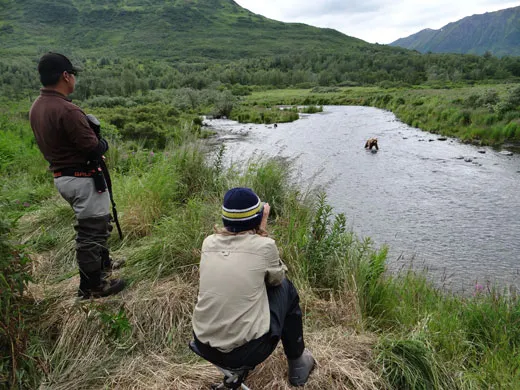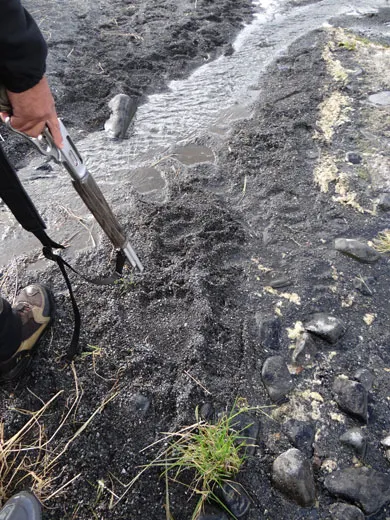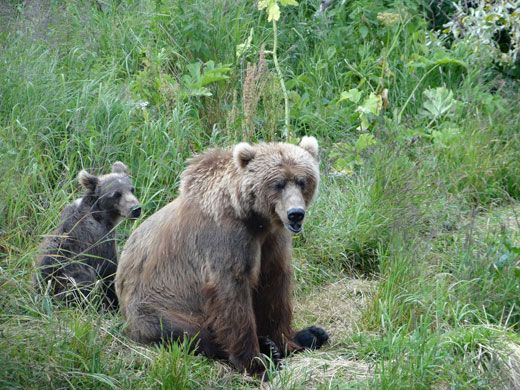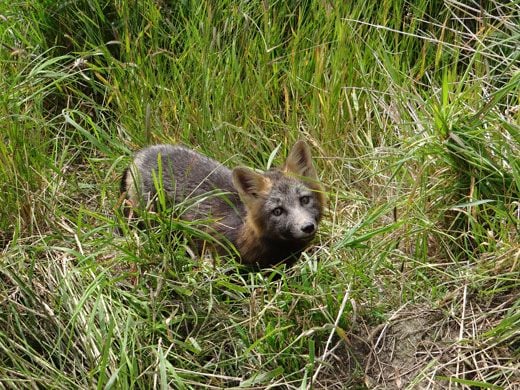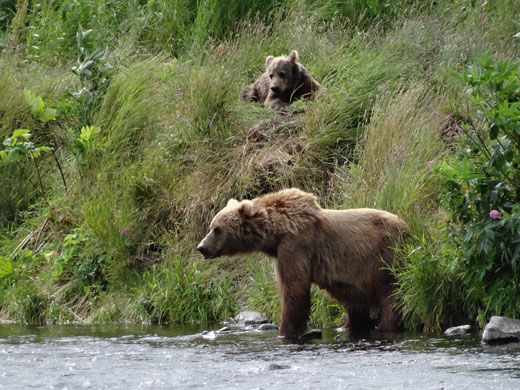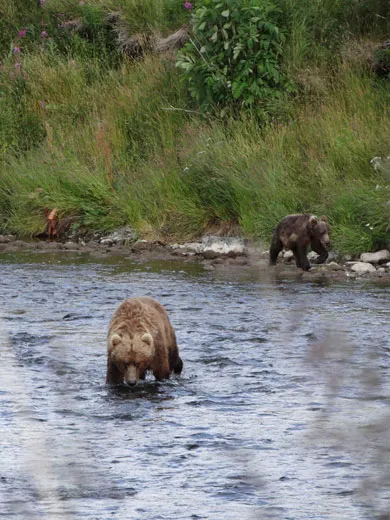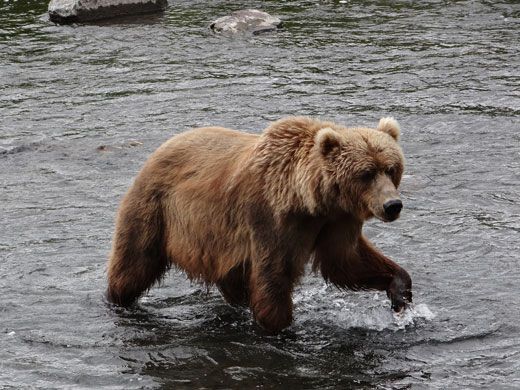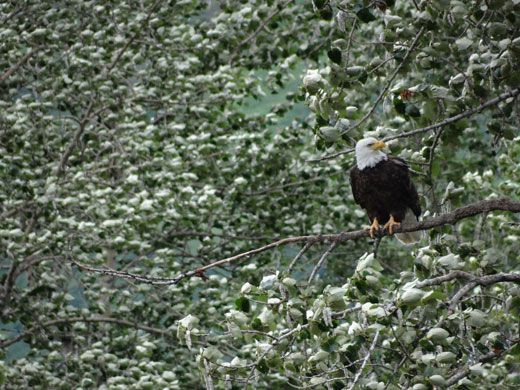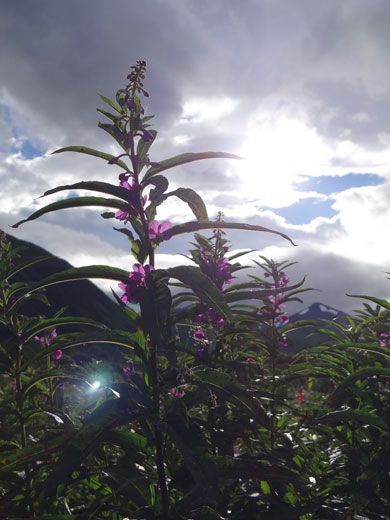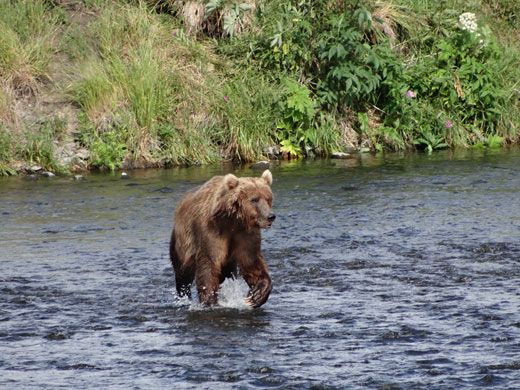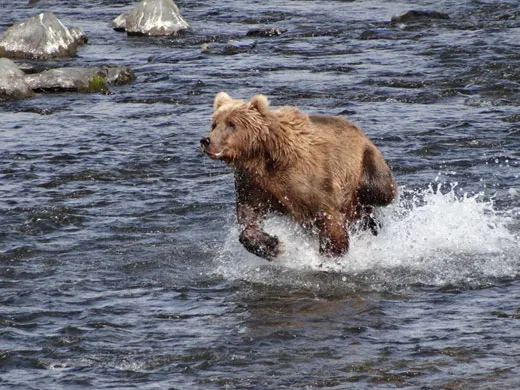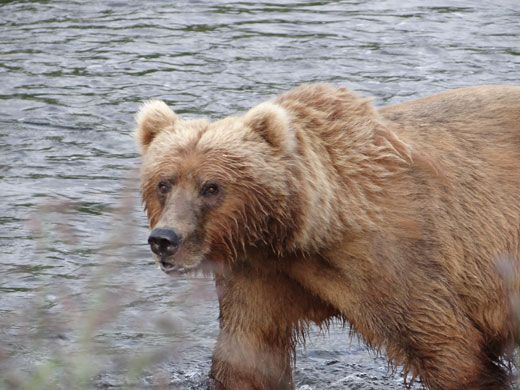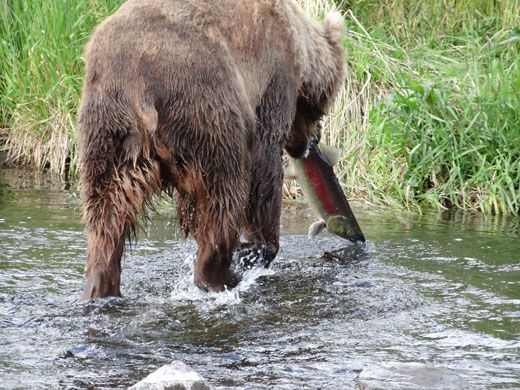Bears, Up Close and Personal, in the Alaskan Wilderness
A newly built retreat gives visitors a chance to see the Kodiaks in their element
/https://tf-cmsv2-smithsonianmag-media.s3.amazonaws.com/filer/Kodiak-brown-bear-Alaska-running-631.jpg)
Rule number one on a Kodiak Island adventure: Never surprise a bear. "Stay together, talk in normal tones and don't make sudden movements," instructs guide Fred Katelnikoff, shouldering a rifle and leading our group of six hikers from the Karluk Lake shore, where we've anchored our skiff, to a river bluff viewing post. In between lies a mountain-backed meadow of shoulder-high wildflowers, grasses and fireweed where, most certainly, bears bed down.
The evidence lies in the vague trails parting the grass where large things clearly have trod, empirical reminders of the Alaskan island's fame as home to the densest population of brown bears in the world: An estimated 3,500 bears live on Kodiak, or roughly one per square mile.
A second armed guide, Arnold Charliaga, brings up the rear, but our ten-minute trek is tense, halting and hushed. Pausing on a hillock, Katelnikoff puts out an arm, signaling us to stop. Suddenly a young bear pops up on hind legs above the grasses, ears erect, towering 20 feet ahead. We instinctively bunch together, hearts pounding. “Well, good morning,” says the guide calmly, holding his ground. Then, after several agonizing seconds, the bear drops down and disappears in the bush, huffing in complaint as it crashes toward the river and a reunion with its mother.
"You might have heard me swear," says Katelnikoff over his shoulder. (I didn't, I tell him.) "It was in Alutiiq."
The Alutiiq are native to Kodiak Island, the largest island in Alaska and the exclusive home of the world's largest bear, the Kodiak brown bear. The Kodiak National Wildlife Refuge occupies two-thirds of the 3,588-square-mile island; this roadless, 1.9-million-acre tract encompasses 117 streams that draw all five varieties of Pacific salmon, and their predators, Kodiak bears. Most bear watches here take place from boats along the coast, or from cars along the limited road system near the town of Kodiak. But this past August, the indigenous Alutiiq nation’s Koniag Corporation opened the Kodiak Brown Bear Center (kodiakbearcenter.com) on a sliver of its 112,000-acre holding in the park. The boutique four-cabin retreat on 56-acre Camp Island in the middle of Kodiak’s Karluk Lake lies roughly 90 miles southwest by float plane from the town of Kodiak and offers a civilized base—there's a wood-stoked Russian sauna, upscale meals including salmon eggs Benedict and spacious lodging with spa-like bathrooms—in the rugged heart of bear country.
"We grew up knowing if you respect the bear, the bear respects you," says Katelnikoff after our first bear encounter, as we stand watch over the Thumb River where the now calm cub and mother wander along the opposite bank in search of salmon. Katelnikoff, the KBBC's lead guide, counsels us to keep still, stay visible but low, and refrain from speaking in high-pitched tones.
Over 11,000 years ago, Kodian Island split off from the southern coast of Alaska, separating these bears from their grizzly bear cousins on the mainland. With abundant flora and fauna on the island providing a bear banquet, the Kodiaks have evolved into a unique subspecies, Ursus arctos middendorffi, brown-hided but often over twice as large as grizzlies with notably large heads. They can grow up to 2,200 pounds, and 12 feet tall; historic photos show hunters dwarfed by their prey. Despite their size, Kodiaks sustain themselves on ranges that average only 25 square miles; other brown bears require 150 to 200 square miles.
"The Kodiak bears have evolved to accept each other's presence in close proximity," says Koniag environmental scientist Matt Van Daele, who helps manage the Alutiiq land. "They have a very diverse range of communication.” Cubs whimper like children to get their mother’s attention and purr when nursing to communicate comfort; mothers make a puffing noise to attract wayward cubs. The bears also communicate with growls and popping jaws when they are nervous, such as when they feel threatened by humans.
Visitors have come to Kodiak for brown bears since Russian trappers arrived on the island in 1784, hunting sea otters for their valuable pelts. Russian colonists enslaved the native Alutiiqs to hunt the otters. The Alutiiqs didn’t fare much better under the Americans, who bought Alaska in 1867; American policies of assimilation discouraged the use of native language and traditions. But in 1908, the Alutiiq gained a measure of respect when the conservation-minded Alaska Game Act required hunters to employ local guides, kick-starting an industry that served big-game stalkers of all sorts, including, in 1967, the Queen of Nepal. The refuge still permits hunting, but far more visitors come to the island now to see bears than shoot them.
Bear-viewing, the focus of two daily KBBC outings by skiff, coincides with the salmon run from roughly August through October, when the Kodiaks come to the rivers to gorge before the onset of winter. Van Daele's research indicates the bears may eat up to a dozen fish, averaging eight pounds each per day.
Like the best fishermen, bears are patient anglers, slowly padding out to the shallow center of the river and facing downstream, looking for salmon swimming up. When a bear makes a move, however, it is fast, lumbering up to 35 miles per hour before pouncing. Our group watched as one active sow pulled a ten-pound pink salmon from the Thumb River and dragged it onshore, devouring it in a crunch of bones in mere minutes, leaving the tail for the whining cub behind her. Bears are omnivores, and another sow treated the wild grasses on the opposite riverbank like a salad bar, grazing as she walked.
"It's almost like they smell in vivid color," says Katelnikoff, who looks like an outdoorsy version of a Secret Service agent, sidearm at the ready, radio wire in his ear. "If our sense of smell is the equivalent of a postage stamp, a dog's is an 8-by-11 sheet of paper and a bear's is a newspaper."
Though they clearly smell us nearby, the bears largely ignore us in their single-minded search for salmon, treating us to the intimacies of their lives often as close as 15 feet away. One sleepy bear rolls over on a grassy bluff and allows her cub to nurse during their afternoon siesta. Another, after resting, engages in "snorkeling," sitting in a deeper part of the river and putting her head below water to look for fish. When none pass, she grooms herself, scratching with a comb of straight claws as long as fingers.
By midday, all four visible bears have chosen resting spots on the riverbanks, cuing our still cautious but ultimately drama-free departure for lunch. "It's not the bears I see that I worry about," says Katelnikoff, laying his rifle in the bottom of the boat. "It's those I don't."
Info: Kodiak Brown Bear Center, 4-day stay $3,499 per person, double occupancy, 877-335-2327, kodiakbrownbearcenter.com
